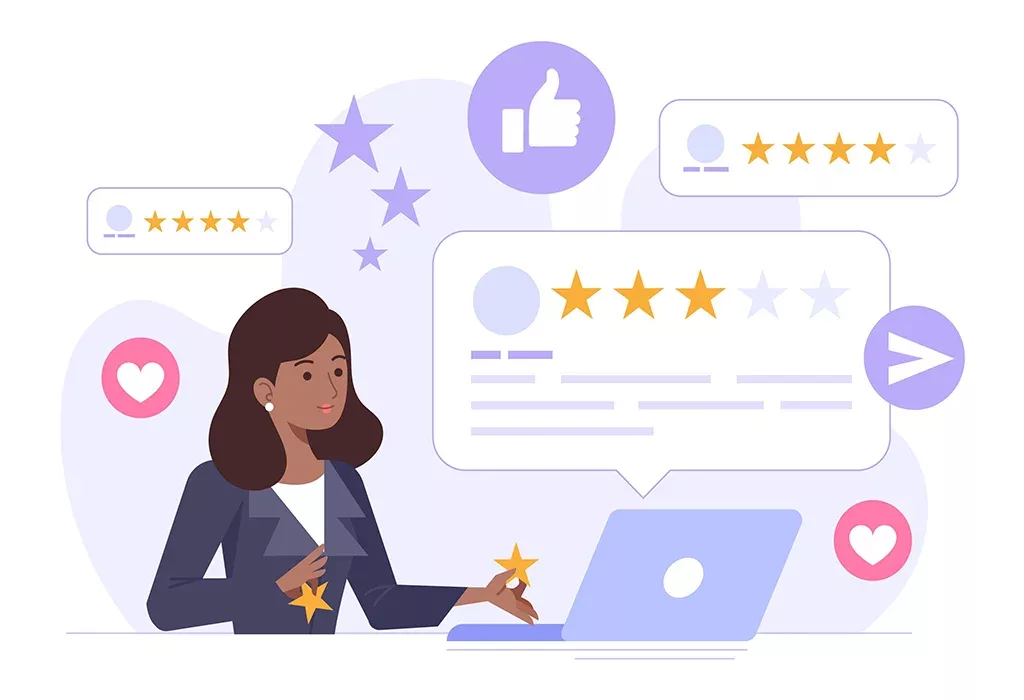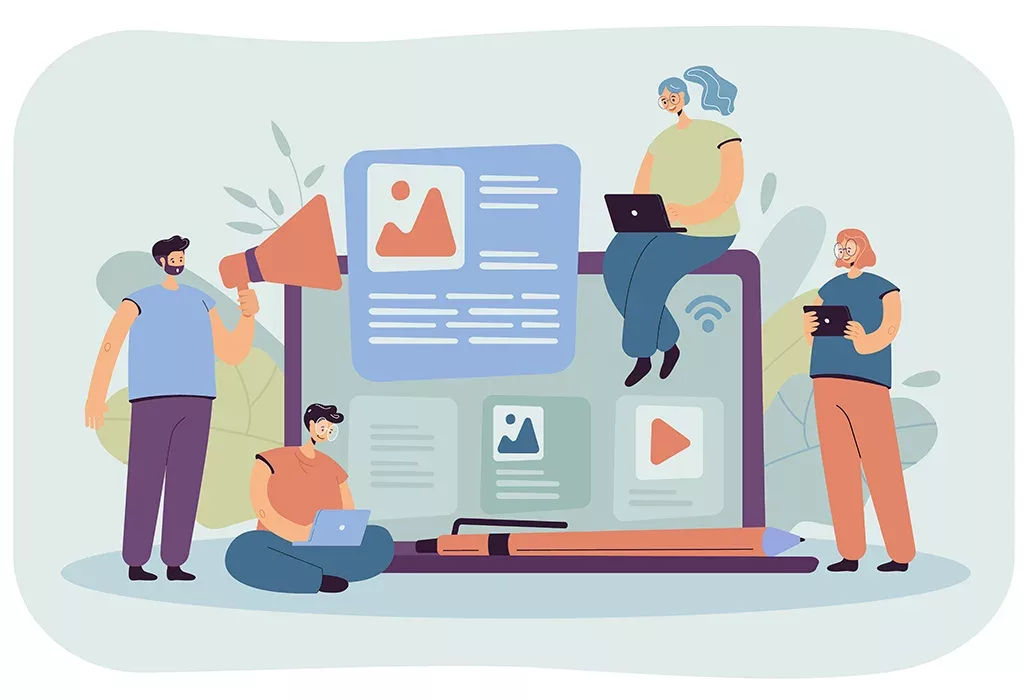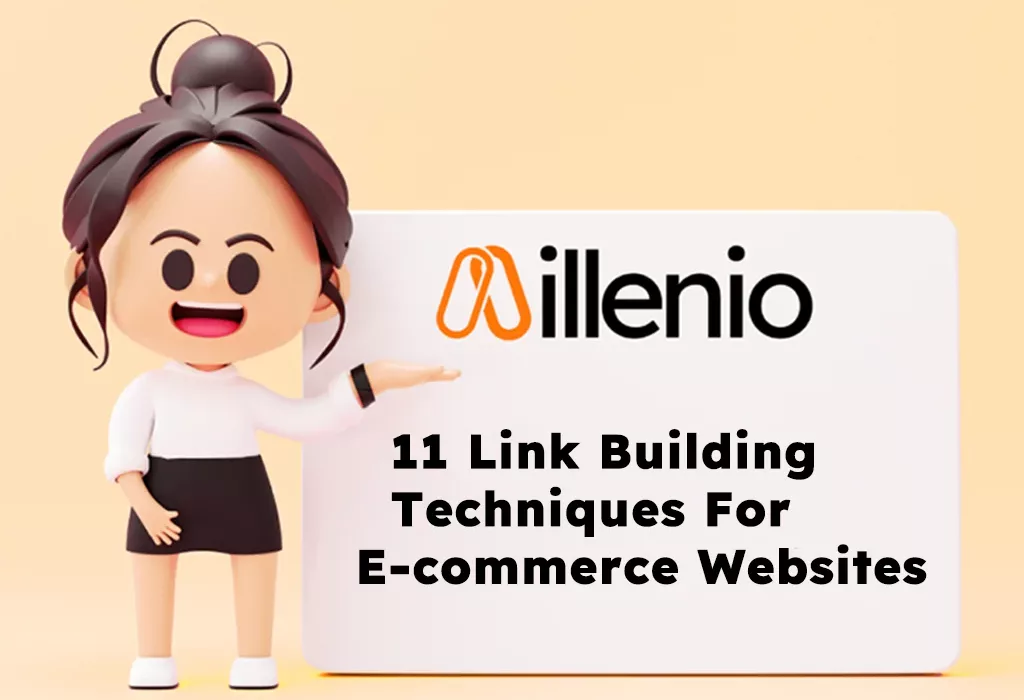by Liam Cook
January 31, 2024
0

Link building is essential to search engine optimisation (SEO) for e-commerce websites. High-quality backlinks can improve your website’s authority, visibility, and organic rankings.
This article will explore 11 effective link-building techniques tailored explicitly for e-commerce websites. Whether you’re a startup or an established online store, these strategies will help you attract relevant traffic and boost your online sales.
Creating compelling and shareable content is essential to successful link-building for e-commerce websites. When you produce high-quality content that is informative, engaging, and relevant to your target audience, you attract organic traffic and increase the likelihood of other websites and bloggers linking to your content.
To create compelling content, conduct thorough research on topics that resonate with your target market. Understand their pain points, interests, and needs, and develop content that addresses these aspects. This could include blog posts, videos, infographics, product guides, etc.
When crafting blog posts, ensure they are well-written and structured and provide valuable insights. Use a mix of storytelling, data, and examples to make your content engaging and informative. Incorporate relevant keywords within the range to improve its visibility in search engine results.
Videos are another powerful medium for creating compelling content. They allow you to showcase your products visually, demonstrate their usage, or provide tutorials. Videos have high shareability potential, and if your content is valuable and well-produced, it can be widely shared across social media platforms, generating backlinks and increasing brand exposure.
Infographics are visually appealing representations of data or information. They condense complex concepts into easily digestible visuals, making them highly shareable. Create visually appealing, informative, and relevant infographics for your industry or products. Include statistics, charts, and graphics that highlight key points. Additionally, provide an embed code with your infographics to make it easy for other websites and bloggers to share them while linking to your e-commerce website.
Product guides and tutorials can serve as valuable resources for your target audience. Create comprehensive guides that educate users on using your products effectively or provide tips and tricks related to your industry. These guides can attract backlinks from relevant websites or blogs that find them helpful for their audience.
Furthermore, encourage social sharing of your content by including social sharing buttons on your website or blog. Make it easy for readers to share your content across their preferred social media channels, increasing the chances of it being discovered and linked to by others.
Remember, providing value to your audience is the key to creating compelling and shareable content. When your content is genuinely helpful, informative, and engaging, other websites, bloggers, and users will naturally want to link back to it, amplifying your link-building efforts and driving more traffic to your e-commerce website.

Guest blogging is an effective and mutually beneficial technique for link-building in e-commerce websites. By contributing high-quality guest posts to authoritative websites or blogs in your industry, you can establish your brand as an industry expert, gain exposure to a new audience, and acquire valuable backlinks to your e-commerce website.
To start with guest blogging:
When reaching out to potential guest blogging opportunities, personalise your outreach. Take the time to understand the website’s content, tone, and audience to tailor your pitch accordingly. Please introduce yourself, explain why you are interested in contributing to their platform, and highlight the topic or angle you propose for your guest post. Demonstrate your expertise and how your content will provide value to their readers.
Once your guest post is accepted, focus on creating exceptional content. Ensure that your post is well-researched, informative, and well-written. To enhance readability, structure your content with headings, subheadings, and bullet points. Incorporate relevant keywords naturally within the text to improve its SEO value.
In your guest post, strategically include a link to your ecommerce website. This link should be relevant to the context of the content and provide additional value to readers. For example, you could link to a related blog post, a product page, or a landing page offering exclusive content or discounts. Including relevant internal links within the guest post provides a seamless user experience and encourages readers to explore your website further.
Remember, guest blogging is not just about acquiring backlinks; it’s about building relationships and contributing valuable insights to the community. Engage with readers through comments and social media, responding to their questions and feedback. This interaction strengthens your authority and helps foster long-term connections with the website owner, other contributors, and their audience.
Lastly, track the performance of your guest posts. Monitor the traffic and engagement they generate for your e-commerce website. Analyse the impact of the backlinks you’ve acquired, the referral traffic, and the conversions they drive. This data will help you assess the effectiveness of your guest blogging efforts and guide future strategies.
In conclusion, guest blogging is a powerful link-building technique for e-commerce websites. By leveraging the reach and authority of established websites in your industry, you can expand your brand’s visibility, attract targeted traffic, and earn valuable backlinks. Embrace the opportunity to share your expertise, provide value to readers, and cultivate meaningful relationships within your niche through guest blogging.
Influencer marketing has emerged as a highly effective link-building strategy for e-commerce websites. Collaborating with influential individuals in your industry allows you to tap into their established audience, gain credibility, and acquire valuable backlinks to your website. Influencers have a dedicated following that trusts their recommendations, making this approach a powerful way to boost your online visibility and drive targeted traffic.
To start with influencer marketing, identify influencers who align with your brand values, target audience, and industry niche. Look for influencers with an engaged and relevant following and a record of creating high-quality content. Platforms such as social media, blogs, YouTube, and podcasts are great places to find influencers who can potentially promote your e-commerce website.
When approaching influencers, take a personalised and genuine approach. Craft a compelling outreach message highlighting why you admire their work, how your brand aligns with their values, and how collaboration can be mutually beneficial. Offer a clear value proposition and explain how partnering with you can provide valuable content or offers to their audience.
There are various ways to leverage influencer marketing for link-building purposes. One approach is to have influencers mention or review your products or services on their platforms. This can be done through sponsored content, product features, or endorsements. Influencers sharing their positive experiences with your brand enhances your credibility and encourages their followers to visit your website.
Another strategy is to collaborate with influencers on content creation. This could involve co-creating blog posts, videos, or social media campaigns highlighting your products or services. By working together, you can leverage the influencer’s creativity and expertise while integrating links to your e-commerce website within the content. This provides valuable backlinks and drives targeted traffic from the influencer’s audience.
In addition to direct collaborations, influencer takeovers and guest appearances can also be effective. Allow influencers to temporarily take control of your social media accounts, create content, and engage with your audience. This exposes your brand to the influencer’s followers, adds a fresh perspective, and increases engagement.
To maximise the impact of influencer marketing, consider running exclusive promotions or discount codes for the influencer’s audience. Incentivises their followers to visit your website, purchase, and share their positive experiences. These promotions’ increased traffic and sales can further boost your website’s authority and visibility.
Throughout your influencer marketing campaigns, maintain open communication and build genuine relationships with the influencers. Engage with their content, respond to comments, and show appreciation for their support. This fosters long-term partnerships and opens the door for future collaborations and link-building opportunities.
It’s crucial to track the performance of your influencer marketing efforts. Monitor the traffic, engagement, and conversions generated from influencer collaborations. Analyse the impact of the backlinks acquired and the overall return on investment. This data will help you assess the effectiveness of your influencer partnerships and guide your future influencer marketing strategies.
In conclusion, influencer marketing is a powerful link-building technique for e-commerce websites. Leveraging the reach and influence of industry influencers allows you to tap into their dedicated audience, build credibility, and acquire valuable backlinks. By establishing authentic collaborations and providing value to the influencer’s followers, you can significantly enhance your online visibility, attract targeted traffic, and drive conversions for your e-commerce website.

Broken link building is a proactive and effective strategy for link building in the context of e-commerce websites. This technique involves identifying authoritative websites within your industry with broken links and contacting website owners or administrators to inform them about the issue. Simultaneously, you offer them a replacement link to your relevant content to fill the gap left by the broken link. Broken link building helps website owners resolve broken links and allows you to acquire valuable backlinks to your e-commerce website.
To begin with broken link building, you need to conduct thorough research to find websites that are relevant to your niche and have broken links. Tools such as broken link checkers or website crawlers can aid in identifying broken links on these websites. You can manually explore resource pages, blog posts, or articles to find broken links within the content.
Once you have identified a broken link on a relevant website, it’s time to contact the website owner or administrator. Craft a polite and personalised email highlighting the broken link you found on their website and expressing your willingness to help. Explain that you have a piece of relevant content on your e-commerce website that can serve as a suitable replacement for the broken link.
When suggesting the replacement link, ensure that it aligns closely with the topic or context of the broken link. It’s crucial to offer value and provide a seamless transition for the website’s visitors. This can be achieved by presenting your content as a comprehensive resource, an updated version, or an alternative solution that enhances the user experience.
When reaching out, it’s essential to emphasise the benefits of replacing the broken link with your link. Highlight the value and relevance of your content and how it can provide valuable information or resources to the website’s audience. Positioning your replacement link as a mutually beneficial solution increases the chances of the website owner accepting your proposal.
However, it’s important to note that not all outreach emails will result in immediate success. Some website owners may not respond or decline your request. In such cases, keep going. Continue your efforts by identifying other websites with broken links and repeating the outreach process.
To increase your success rate with broken link building, consider enhancing the value of your content. Ensure that the content you offer as a replacement is of high quality, well-researched, and comprehensive. This will make it more appealing to website owners, increasing the likelihood of them accepting your link.
As with any link-building strategy, tracking the results of your broken link-building efforts is crucial. Monitor the number of outreach emails sent, responses received, and successful link acquisitions. Analyse the impact of the acquired backlinks on your website’s authority, traffic, and rankings. This data will help you assess the effectiveness of your broken link-building campaigns and refine your approach over time.
In conclusion, broken link building is a proactive approach to acquiring valuable backlinks for your e-commerce website. By identifying broken links on authoritative websites within your industry and offering relevant replacement content, you can provide value to website owners while gaining valuable backlinks. Consistent broken link-building efforts can contribute significantly to your website’s visibility, authority, and organic rankings.
Building relationships with industry partners is a valuable and mutually beneficial strategy for link-building in the context of e-commerce websites. Collaborating with other e-commerce businesses, industry associations, and complementary brands allows you to expand your network, tap into new audiences, and acquire relevant backlinks to your website.
To initiate relationship-building with industry partners:
Once you have identified potential partners, reach out to them with a personalised and genuine approach. Craft an email or message expressing your admiration for their brand or products and highlighting potential synergies between your businesses. Communicate how a partnership can be mutually beneficial and add value to both parties.
Joint ventures or cross-promotions are an effective way to build relationships with industry partners. Collaborate on projects, campaigns, or events that allow you to combine your resources, expertise, and audiences. For example, you could co-create content, host webinars, or run exclusive promotions together. This collaborative approach enhances visibility and generates backlinks as partners naturally link to each other’s websites.
Content collaborations are another powerful way to build relationships and acquire backlinks. Consider featuring industry partners as guest contributors on your blog or vice versa. This diversifies your content, adds fresh perspectives, and encourages partners to promote it to their audience, generating valuable backlinks and driving traffic.
Furthermore, explore opportunities for link exchanges with industry partners. Identify relevant product or resource pages on your websites where you can mutually feature each other’s links. Ensure that the links are contextually relevant and provide additional value to the users. This exchange not only strengthens the relationship between the businesses but also enhances the linking profile of both websites.
Engaging in industry associations and participating in relevant events or conferences can also help you establish relationships with industry partners. Attend networking events, trade shows, or seminars where you can connect with other e-commerce professionals. Actively engage in discussions, share insights, and build meaningful connections. These relationships can lead to collaboration opportunities and potential backlink acquisitions.
To foster long-term relationships, it’s essential to maintain open communication and support your industry partners. Engage with their content, share their posts on social media, and provide feedback or testimonials when appropriate. Show genuine interest in their success and offer support whenever possible. You build trust, credibility, and goodwill within your industry by nurturing these relationships.
Regularly track the performance of your partnerships and monitor the impact of acquired backlinks on your website’s visibility, organic rankings, and traffic. Assess the effectiveness of your collaborations in driving targeted traffic and conversions. Analyse the engagement and referral data to refine your strategies and identify opportunities for further relationship-building initiatives.
In conclusion, building relationships with industry partners is a valuable approach to link-building for e-commerce websites. By collaborating with other businesses, associations, and complementary brands, you can expand your reach, acquire relevant backlinks, and tap into new audiences. Cultivating these relationships requires genuine engagement, collaboration, and support. You can enhance your brand’s visibility, authority, and online presence through strategic partnerships.

Infographics and visual content are powerful tools in the link-building arsenal for e-commerce websites. These visually appealing and information-rich assets have the potential to attract attention, engage users, and generate valuable backlinks from various sources.
Starting with a well-researched and compelling topic relevant to your industry or products is essential when creating infographics. Identify critical data points, statistics, or concepts you want to convey visually. Ensure your present information is accurate, up-to-date, and valuable to your target audience.
Design plays a crucial role in the effectiveness of infographics. Aim for a clean and visually appealing layout that enhances readability and comprehension. Utilise colours, icons, illustrations, and charts to make the information visually engaging and easy to understand. The visual elements should complement and reinforce the content, creating a cohesive and impactful infographic.
In addition to creating a visually appealing infographic, optimising it for shareability and backlink acquisition is crucial. Provide an embed code with the infographic, making it easy for other websites, bloggers, or publishers to share it on their platforms while giving you proper credit with a backlink. Including social sharing buttons directly on the infographic encourages users to share it across their preferred social media channels, increasing its visibility and potential for backlinks.
To increase the chances of your infographic being shared and linked to, promote it through various channels. Please share it on your website or blog, ensuring it is prominently displayed and easily accessible. Leverage your social media platforms to share the infographic and encourage your audience to engage with it and share it with their networks. Additionally, contact relevant industry influencers, bloggers, or publications, sharing your infographic and explaining how it can benefit their audience. This outreach effort can lead to backlinks and amplify the reach of your infographic.
Visual content extends beyond infographics. Consider creating other visually engaging assets, such as videos, product demonstrations, or interactive elements. These assets can showcase your products, educate your audience, or provide unique experiences. You can drive traffic and acquire backlinks when shared or embedded on other websites by embedding links within these visual elements.
To maximise the impact of visual content, ensure that it is optimised for search engines. Use descriptive and keyword-rich titles, captions, and alt tags. This allows search engines to understand the content of your visuals and improves their chances of appearing in relevant search results. Optimised visual content increases the visibility of your e-commerce website and enhances the likelihood of acquiring backlinks.
Track the performance of your visual content to gauge its impact on your link-building efforts. Monitor the engagement metrics, such as views, shares, and backlinks generated by your infographics or graphic assets. Analyse the referral traffic and conversions driven by these assets to assess their effectiveness in driving targeted traffic and achieving your marketing goals. Use these insights to refine your visual content strategy and create assets that resonate with your audience.
In conclusion, infographics and visual content are potent tools for link-building in e-commerce. Creating visually appealing and informative assets can attract attention, engage users, and acquire valuable backlinks. Optimise your visuals for shareability and search engines, promote them through various channels, and track their performance to maximise their impact. Visual content is a valuable addition to your link-building strategy and can significantly enhance the visibility and authority of your e-commerce website.
Testimonials and reviews are valuable assets in link building for e-commerce websites. By reaching out to influential bloggers, industry publications, or relevant websites, you can offer to provide testimonials or reviews for their products or services. In return, you can request a backlink to your e-commerce website. This strategy helps you build relationships and generates valuable backlinks from trusted sources.
When crafting testimonials and reviews, your feedback must be genuine, detailed, and specific. Use the product or service yourself and provide an honest evaluation of its features, benefits, and overall performance. Highlight what sets it apart and how it has positively impacted your experience or business.
When approaching websites or bloggers, research and choose those with a strong following and reputation in your industry. Look for platforms that align with your target audience and have a history of publishing high-quality content. Personalise your outreach, explaining why you appreciate their work and how your testimonial or review can provide value to their readers.
In your outreach message, express your interest in offering a testimonial or review. Briefly explain your experience with their product or service and how it has benefited you. Emphasise your value through an authentic and detailed testimonial that resonates with your audience.
When including a backlink, it’s essential to approach it tactfully. Request that the website or blogger attribute the testimonial or review to your e-commerce website by linking to your desired page. This link should be contextually relevant, such as relating to a related product or service page. Readers interested in your testimonial can easily access your website and explore further.
In addition to the backlink, you can leverage social proof by providing a headshot, your name, and a brief bio. Enhances the credibility and authenticity of your testimonial or review. Website owners and bloggers are likelier to include such information along with the backlink, as it adds more legitimacy to the endorsement.
Some websites or bloggers may have specific guidelines or processes, as testimonials and reviews are precious for businesses. Respect their policies and follow any instructions provided to ensure a smooth collaboration. Keep the lines of communication open and be responsive to any requests or inquiries throughout the process.
Track the impact of your testimonials and reviews by monitoring the backlinks acquired and the referral traffic they generate. Analyse the engagement and conversion rates resulting from these backlinks. This data will help you evaluate the effectiveness of your testimonial review link-building efforts and guide future strategies.
In conclusion, testimonials and reviews are practical link-building tools for e-commerce websites. You can acquire valuable backlinks from trusted sources by offering genuine and detailed feedback to influential bloggers, industry publications, or relevant websites. Craft personalised outreach messages, tactfully request backlinks, and track the performance of your testimonials and reviews to maximise their impact on your website’s visibility, credibility, and
organic rankings.

Resource and link pages offer a valuable link-building opportunity in e-commerce websites. These pages are curated collections of helpful resources and relevant websites within a specific industry or niche. By identifying sites within your industry with resource or link pages and reaching out to them, you can request to be included on these pages, thereby acquiring valuable backlinks to your e-commerce website.
First, conduct thorough research to find websites in your industry with resources or link pages. These pages are often found on authoritative websites, industry directories, or niche-specific portals. Look for websites relevant to your products, services, or target audience. Evaluate their domain authority, content quality, and the website’s overall reputation.
Once you have identified suitable resources or link pages, craft a personalised outreach message to the website owner or administrator. Express your appreciation for their curated resources and explain why your e-commerce website would be a valuable addition to their list. Highlight your website’s relevance, uniqueness, or value to the industry.
When requesting inclusion on the resource or link page, please briefly describe your e-commerce website and its offerings. Clearly explain how it aligns with the content and theme of the resource page. Include relevant keywords naturally within the description to enhance its SEO value.
To increase your chances of being included, consider offering reciprocal linking opportunities. Propose to have the website owner’s link on your own resource or link page in exchange for being featured on their page. This joint arrangement can be mutually beneficial and encourage website owners to consider including your link.
Ensure that your website provides valuable and relevant content that should be included on resource or link pages. Maintain high-quality standards, offer unique insights or resources, and demonstrate expertise within your niche. This will make it more appealing for website owners to include your link and contribute to their readers’ experience.
It’s important to note that not all outreach efforts will result in immediate success. Some website owners may not respond or decline your request. In such cases, remain proactive and contact other relevant websites with resource or link pages. Persistence and consistent effort are vital in acquiring backlinks through resource and link page inclusion.
Monitor the impact of being included on resource and link pages by tracking the referral traffic and engagement they generate. Analyse the quality and relevance of the backlinks acquired from these pages. This data will help you assess the effectiveness of your resource and link page outreach efforts and refine your approach over time.
In conclusion, resource and link pages provide an opportunity for link-building in e-commerce. By identifying relevant websites and requesting inclusion on their resource or link pages, you can acquire valuable backlinks that enhance your website’s authority and visibility. Personalise your outreach, highlight the value you bring, and monitor the performance of acquired backlinks. Resource and link pages can significantly contribute to your link-building efforts and boost your e-commerce website’s organic rankings and traffic.
Content promotion and outreach are crucial to a successful link-building strategy for e-commerce websites. While creating high-quality content is essential, it’s equally important to actively promote it to maximise its reach and acquire valuable backlinks.
Once you have created compelling and valuable content, it’s time to promote it through various channels. Social media platforms serve as effective channels for content promotion. Share your content across your social media profiles, ensuring you craft engaging captions and utilise relevant hashtags to increase visibility. Encourage your followers to engage with the content by liking, commenting, and sharing it. This engagement increases the reach of your content and improves the chances of acquiring backlinks as others discover and appreciate its value.
In addition to social media, consider contacting influencers, bloggers, and industry publications to notify them about your content. Craft personalised outreach messages that explain why your content would be valuable to their audience. Highlight the unique insights, data, or resources your content provides. Be genuine and focus on building relationships rather than solely seeking backlinks. By demonstrating the value your content offers, you increase the chances of influencers and bloggers linking to it or sharing it with their audience.
As mentioned earlier, guest blogging is another powerful method for promoting content and acquiring backlinks. Seek opportunities to contribute guest posts to authoritative websites or blogs in your industry. Within your guest posts, include links to relevant content on your ecommerce website. This provides value to the readers, drives traffic, and enhances your website’s visibility.
Email marketing is another effective way to promote your content and acquire backlinks. Build an email list of interested subscribers and regularly send them newsletters or updates featuring your latest content. Craft compelling subject lines and include snippets of your content to entice readers to click through to your website. Please encourage them to share the content with their networks, increasing their reach and the chances of acquiring backlinks.
Content promotion and outreach go hand in hand, as outreach efforts are crucial in acquiring backlinks. Actively reach out to relevant influencers, bloggers, and industry publications, offering them exclusive access or additional insights related to your content. Engage in genuine conversations, build relationships, and demonstrate how your content aligns with their interests and audience. By fostering these relationships, you increase the likelihood of acquiring valuable backlinks and generating more exposure for your e-commerce website.
Tracking the performance of your content promotion and outreach efforts is essential. Monitor the engagement metrics, such as social media shares, comments, and likes, to gauge the success of your content promotion. Please keep track of the backlinks acquired through outreach and measure the referral traffic and conversions they generate. Analyse this data to refine your content promotion strategies and focus on channels and tactics that yield the best results.
In conclusion, content promotion and outreach are integral to effective link-building for e-commerce websites. You can maximise your reach and acquire valuable backlinks by promoting your content through social media, outreach to influencers and bloggers, guest blogging, and email marketing. Foster genuine relationships, provide value to your audience and track the performance of your efforts to improve your content promotion and link-building strategies continuously.

The Skyscraper Technique is an advanced and highly effective link-building strategy for e-commerce websites. This technique involves finding popular content within your industry and creating something even better to attract backlinks and boost your website’s visibility and authority.
To implement the Skyscraper Technique, identify highly linked-to articles, blog posts, or resources in your niche. Look for content that has gained significant attention, generated numerous backlinks, and resonated with your target audience. Tools like backlink analysis or search engine results can help you identify such content.
Once you have identified the target content, the next step is to create an improved and more comprehensive version. The goal is to make your content the definitive resource on the topic. Dive deeper into the subject matter, conduct additional research, and include more up-to-date information, statistics, case studies, or expert insights.
While creating your improved content, focus on enhancing the value and presentation. Make it visually appealing with engaging design elements, including high-quality images, graphs, charts, or infographics. Structure the content in a way that is easy to read and navigate, utilising headings, subheadings, and bullet points to improve readability.
After creating your superior content, it’s time to promote it and attract backlinks. Reach out to websites, bloggers, and influencers who have linked to the original content you found during your research. Notify them about your improved resource and explain why it is more comprehensive, up-to-date, and valuable to their audience. Offer them the opportunity to update their link to point to your superior content.
When conducting outreach for the Skyscraper Technique, personalise your messages and highlight how your content adds value. Emphasise how your content expands on the topic, provides more in-depth insights, or offers unique perspectives. Demonstrating your content’s worth increases the chances of other websites and influencers linking to it.
Additionally, leverage your network and social media platforms to promote your improved content. Share it across your social media profiles, engage with relevant communities or forums, and utilise email marketing to notify your subscribers about the valuable resource you have created. Encourage sharing and engagement to amplify the reach and impact of your content.
Monitoring the performance of your Skyscraper Technique efforts is essential. Track the backlinks acquired, referral traffic generated, and the overall impact on your website’s visibility and organic rankings. Analyse the engagement metrics, such as time on page, bounce rate, and social shares, to gauge the reception of your content. This data will help you refine your Skyscraper Technique strategy and make improvements for future iterations.
In conclusion, the Skyscraper Technique is a powerful approach to acquiring high-quality backlinks for your e-commerce website. By identifying popular content, creating improved and more comprehensive versions, and conducting strategic outreach, you can attract backlinks, increase your website’s authority, and drive targeted traffic. The Skyscraper Technique requires thorough research, valuable content creation, and proactive promotion. By implementing this technique, you can position your e-commerce website as a go-to resource within your industry.
In conclusion, implementing effective link-building techniques is crucial for the success of e-commerce websites. By employing the 11 strategies mentioned in this article, including creating compelling and shareable content, engaging in guest blogging, leveraging influencer marketing, utilising broken link building, building relationships with industry partners, creating infographics and visual content, utilising testimonials and reviews, seeking resource and link page inclusion, conducting content promotion and outreach, and actively participating in industry forums and communities, you can significantly enhance your website’s authority, visibility, and organic rankings.
Link building improves your website’s search engine optimisation and drives targeted traffic to your e-commerce store, increasing the chances of conversions and boosting online sales. These strategies provide a comprehensive approach to acquiring high-quality backlinks from reputable sources, enhancing your website’s credibility and trustworthiness in search engines and users’ eyes.
It’s important to note that successful link-building requires a long-term, consistent effort. Building relationships, creating valuable content, and engaging with influencers and industry partners should be ongoing practices. Monitor the performance of your link-building efforts, track the acquired backlinks, and analyse their impact on your website’s metrics, such as organic traffic, conversion rates, and search engine rankings. This data will help you refine your strategies, focus on the most effective techniques, and adapt to evolving trends and algorithms.
Remember, the key to successful link-building is to provide value, foster genuine relationships, and stay proactive in your outreach and content promotion. By investing time and effort into implementing these link-building techniques, you can establish your e-commerce website as an authority within your industry, attract targeted traffic, and ultimately drive sustainable growth and success.
In the dynamic and competitive landscape of e-commerce, link-building remains a crucial pillar of SEO and online marketing. By continuously refining your approach, staying updated on industry best practices, and adapting to new opportunities, you can stay ahead of the curve and leverage link-building to propel your e-commerce website to new heights.

